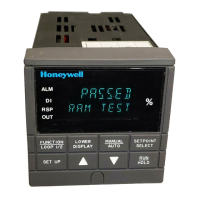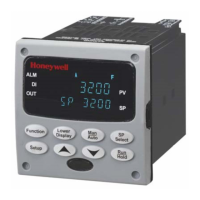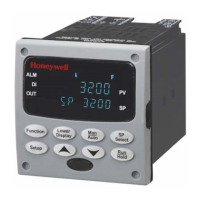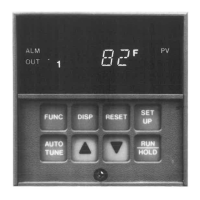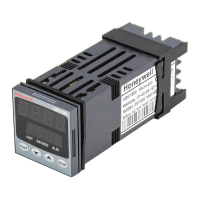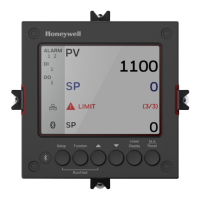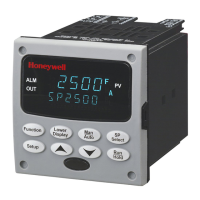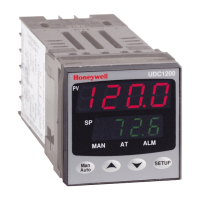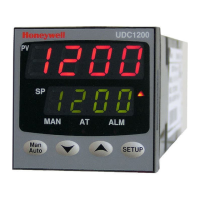Configuration
80 UDC3500 Universal Digital Controller Product Manual 3/07
Function Prompt
Lower Display
Selections or
Range of Setting
Upper Display
Parameter
Definition
3PSTEP
THREE POSITION STEP—The Three Position Step
Control algorithm allows the control of a valve (or
other actuator) with an electric motor driven by two
controller relay outputs; one to move the motor
upscale, the other downscale without a feedback
slidewire linked to the motor shaft. The deadband is
adjustable in the same manner as the duplex output
algorithm.
The Three Position Step Control algorithm provides
an output display (OUT), which is an estimated
motor position, since the motor is not using any
slidewire feedback. Although this output indication is
only an approximation, it is “corrected” each time the
controller drives the motor to one of its stops (0 % or
100 %). It avoids all the control problems associated
with the feedback slidewire (wear, dirt, noise). When
operating in this algorithm, the estimated OUT
display is shown to the nearest percent (i.e., no
decimal). This selection forces the Output Algorithm
selection to “POSPROP”. See Subsection
3.14.
Refer to the Operation section for motor position
displays.
As a customer configurable option, when a third
input board is installed, the motor slidewire can be
connected to the controller. The actual slidewire
position is then shown on the lower display as POS.
This v
alue is used for display only. It is NOT
used in the Three Position Step algorithm. To
configure this option, set Input 3 actuation to
SLIDEW and then calibrate Input 3 per Subsection
6.5.
ATTENTION Other prom
pts affected: DEADBAND
PID LOOPS
PID LOOPS—Number of PID Loops to be used.
1 LOOP
1 LOOP—Select one loop of control.
2 LOOPS
2 LOOPS—Select two independent loops of control,
each with its own PID tuning sets and control
parameters.
CASCADE
CASCADE—Select Cascade Control. In a Cascade
control system, the output of the primary loop (loop
2) is used to adjust the remote setpoint of the
secondary loop (loop 1). The output of the
secondary loop is used to control the final control
element.

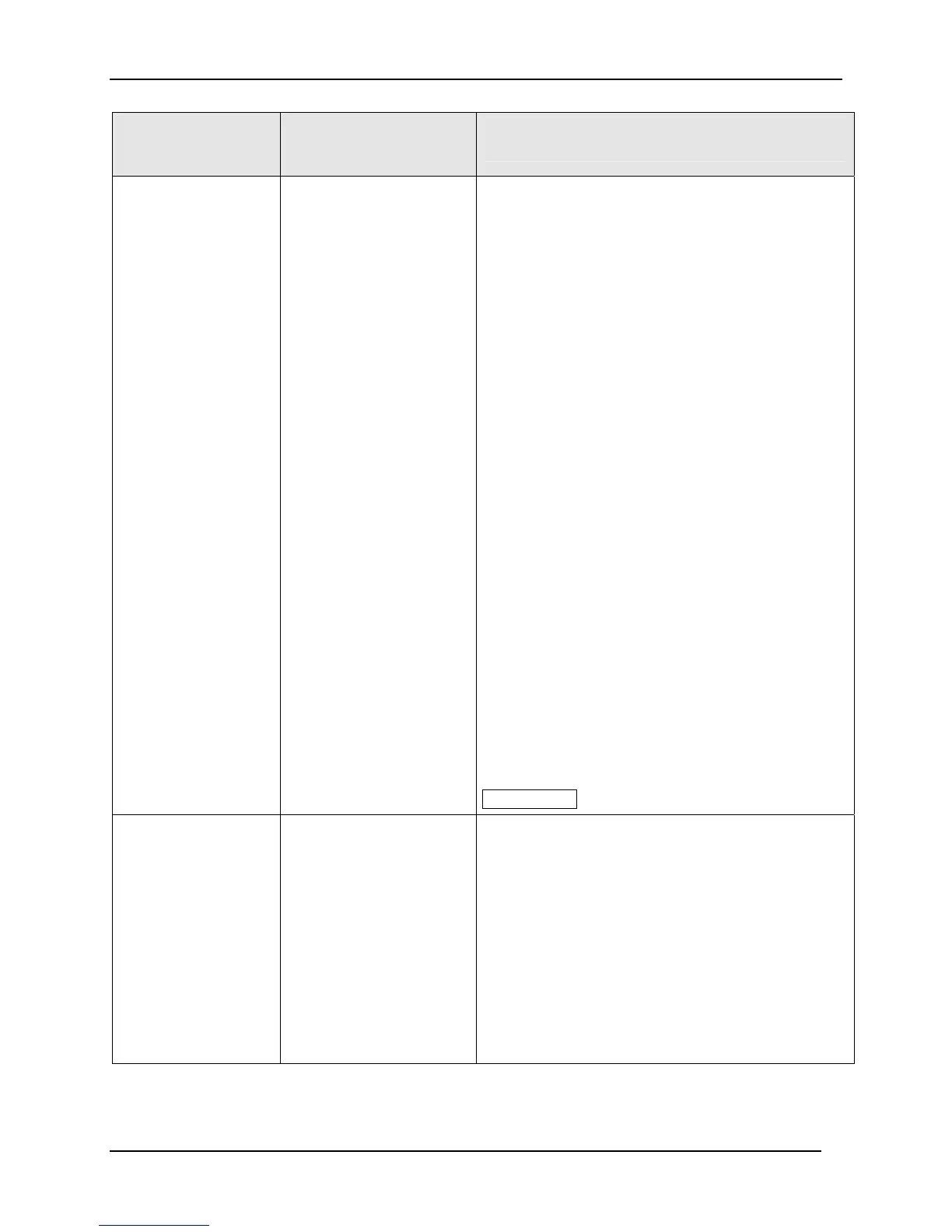